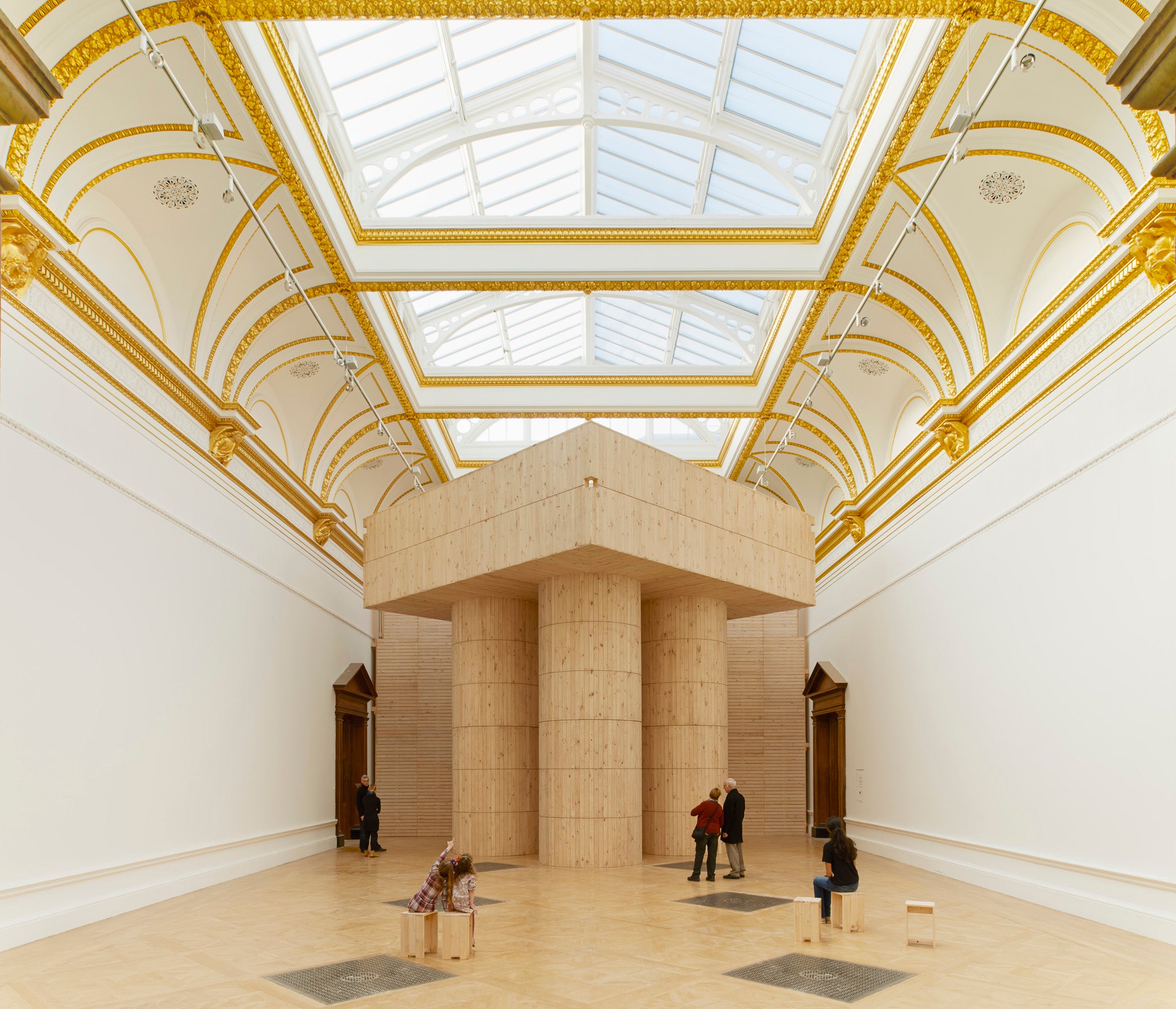Sensing Spaces: Architecture Reimagined, review: 'A terrific show that leaves you at peace'
Royal Academy, London

“Everything here is yes!” Inger, a very charming staff member, tells me as I walk through the doorless entrance of this terrific exhibition of architectural installations from around the world. Seven architectural practises have taken over the neoclassical rooms of the gallery with the brief to make you feel something. And it really works.
The exhibition is all about the power of architecture to shape – even dictate – our emotions. My mood changed radically from one room to the next. There is much about the idea of the void; the visitor is corralled, contained, and treated to existential ascents and descents. However, the exhibition does not seek to provoke you in a sadistic or cynical way. Rather than dread and angst, on leaving I felt something more like peace.
The first installation by Chilean architects Pezo von Ellrichshausen is a soaring, pine, melodramatic fairy-tale of a structure called Blue. Three large columns rise all the way to the ceiling, impressive and absurd. You find – unexpectedly – a door at the base of each. You hesitate before entering – is it allowed? You plod up a spiral staircase, which requires effort. You emerge onto a look-out, from whence you can gaze at all the empty space in the room.
Most remarkably, you are pressed up close to the gold angels that adorn the neoclassical cornice. This is a metaphysical flourish: you are literally face to face with the divine, usually so out of reach. But then you go down again, and it’s a slope this time, and it takes you into a dark corridor with a square of brilliant, shining light at the end, almost like a near-death experience. The suggestion seems to be: it’s so much easier to decline. I went up the staircase again, looked out again, went down again, which gave the whole thing a myth of Sisyphus flavour. Or perhaps I was just reading too much into it.
If Blue is playful, the installation by Chinese architect Li Xiaodong is fabulously still, serious, and meditative. This is one of the highlights of the exhibition. Hazel sticks are lined up in uniformity to create the walls of a labyrinth. The floor is comprised of white LED light panels, which are glowing and muted, dazzling and dull, like hard-packed snow. You are channelled into a mirrored space where you can look through a window and stare at your own reflection across a garden of pebbles. I was lucky enough to visit when no one else was there, and the experience of waving at myself in this zen atmosphere was truly disconcerting, like meeting your doppelganger in a dream.
Similarly enchanting are installations by Japanese architect Kengo Kuma and Grafton Architects from Ireland. The second Grafton installation is perhaps my favourite. It is a poetic feat. Manipulated light falls in cycles from the gallery ceiling, making you look up. The gesture in itself seems hopeful. Then the light goes and darkness returns, and you have to wait for the light to come again.
25 Jan – 6 April 2014
Join our commenting forum
Join thought-provoking conversations, follow other Independent readers and see their replies
Comments
Bookmark popover
Removed from bookmarks